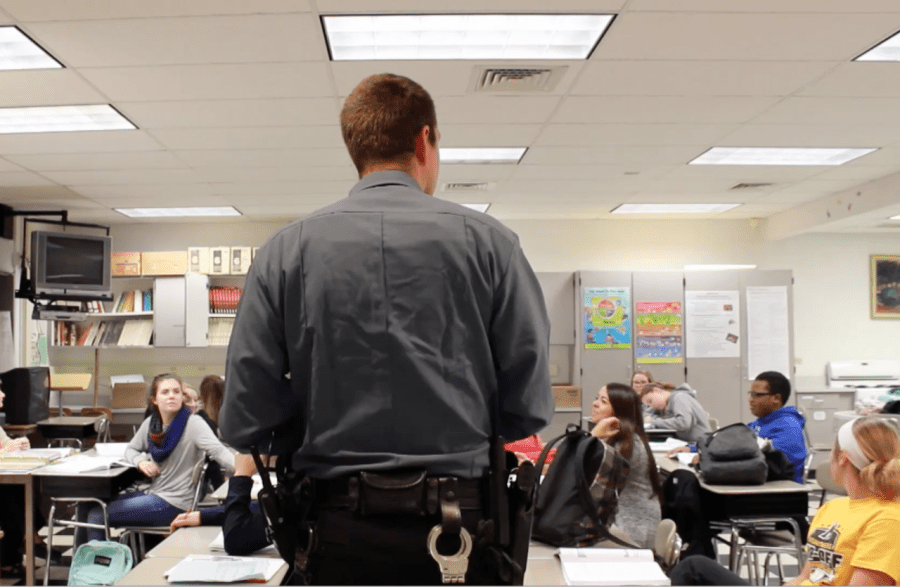Are SROs Really Necessary?
On November 12, the FUSD Board decided to remove SROs, or School Resource Officers from all Fremont schools. So how important are SROs to ensure campus safety?
SROs are often unable to do the several tasks assigned to them properly, increasing risks and dangers at times.
SROs, or school resource officers, are police officers found on school campuses meant to help protect students and faculty alike. On Nov 12, Fremont trustees voted to remove the program (3-2) and restructure interactions between schools and law enforcement. The decision to withdraw SROs received both immense support and opposition, with parents, teachers, and students alike heavily split on the topic. While SROs are beneficial in providing protection for school campuses and students, they are not trained to handle the many situations they are meant to deal with and are therefore not completely necessary.
School resource officers typically protect school campuses, responding to any threats that may arise. During the start of the school year in August, several FUSD schools received bomb threats (later proven non-threatening). Since some teachers continued working from school during distance learning, SROs investigated the threats and secured campuses. However, SROs have rarely been successful at mitigating ongoing crimes such as school shootings, typically only stepping in after the crime has taken place. A study by the Washington Post in 2018 documented 197 school shootings, of which only one shooter was actively stopped by a school resource officer1. SROs are better equipped to prepare students for such crimes through lockdown drills and other practices, but are often seen doing little otherwise. As a result, SROs may provide a false sense of safety, as they do not often respond well to severe crimes. This means that when an actual emergency occurs, preparation and caution may be limited even in situations where SROs are unable to protect students. Such scenarios have been seen in various law enforcement forces, including the TSA, where body scans are faulty at best and easily manipulated2.
Next, the current SRO program is extremely spread out, working on a variety of jobs all at once. Fremont SROs are not only responsible for securing campuses and special school events, but also are the only people in Alameda County who can perform 5150s, or mental holds. These holds allow SROs to place students under psychiatric detention based on their discretion. In other words, students could be held in a mental health facility for up to 72 hours. At times, this power can be abused, as seen in the case of a Mission San Jose High School alumni, who was placed under a mental hold despite recommendations against this by her own counselor3. Further, she had been roughly grabbed by officers, adding to the trauma. Rather than leaving issues such as mental health to SROs, the SRO Task Force recommended utilizing Alameda County Behavioral Health Care Services (ACBHS) and other groups that specifically deal with mental health-related problems.
Many who fully support SROs mention the safety and security that SROs bring to schools during school events such as dances. Not to mention, the varied tasks that SROs accomplish seem to make the $830,000 allocated to managing SROs worth it. While SROs are a valuable resource in protecting school events, many tasks they do may not be the most suitable for their given training. As they are generally not taught to communicate like a counselor, placing such responsibilities on SROs can be detrimental to both students and officers. Others believe that SRO presence alone may still help deter some assailants from harming schools. However, SROs often do not react quickly enough to prevent damages, as described earlier. Not to mention, the number of school shootings has increased; within 46 weeks of school in 2019, there had already been 45 school shootings4.
Ultimately, SROs can be influential to some extent in providing security for normal events. Unfortunately, they are not trained enough to deal with mental health and some of the extreme scenarios that they are expected to prevent. To improve SRO effectiveness and overall school safety, allocating their budget to prioritize mental health officers and other resources is a better way to go.
Links:
1. www.washingtonpost.com/graphics/2018/local/us-school-shootings-history/
2. www.theatlantic.com/national/archive/2014/01/tsa-business-security-theater-not-security/357599/
3. drive.google.com/file/d/1cvKgxfUDOl25gKjOfzSJdxw1eCvjvcEY/
4. www.cnn.com/2019/11/15/us/2019-us-school-shootings-trnd/index.html







